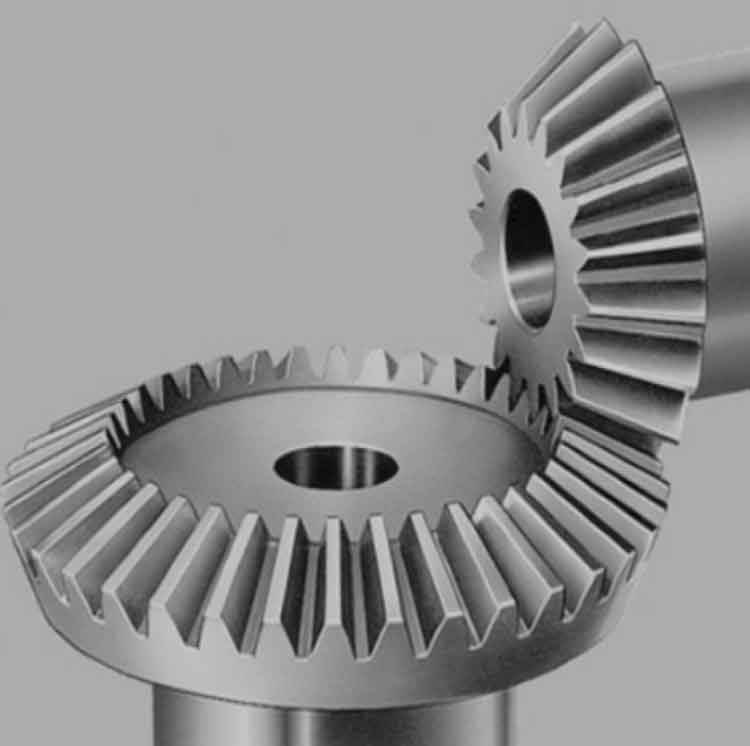Straight bevel gears are designed based on specific geometrical parameters and tooth profiles to ensure efficient power transmission and smooth operation. Here’s a simplified overview of the key aspects of straight bevel gear design, including geometry and tooth profiles:

Gear Geometry:
- Cone Angles: Straight bevel gears have conical shape teeth that are generated from two intersecting cones. The cone angles represent the slope of the gear tooth surfaces and are typically equal for both gears in a pair.
- Pitch Diameter: The pitch diameter is the imaginary circle from which the gear teeth are derived. It represents the effective size of the gear.
- Pressure Angle: The pressure angle is the angle between the tangent to the tooth profile at the pitch point and the line of action. It affects the tooth strength, contact ratio, and efficiency of the gear system.
Tooth Profiles:
- Tooth Shape: The tooth profile of straight bevel gears is typically based on involute curves, which provide smooth and efficient tooth engagement. The involute tooth shape ensures gradual tooth contact during meshing, reducing impact and noise.
- Addendum and Dedendum: The addendum is the distance from the pitch circle to the top of the tooth, while the dedendum is the distance from the pitch circle to the bottom of the tooth. These dimensions determine the strength and durability of the gear teeth.
- Clearance: The clearance is the intentional gap between the mating gear teeth to accommodate manufacturing tolerances, misalignments, and thermal expansion. It ensures smooth engagement and minimizes the risk of interference between the gear teeth.
- Fillet: The fillet is the curved region between the tooth surface and the bottom of the gear tooth. It helps distribute stress and prevents stress concentrations, improving the strength and durability of the gear tooth.
Designing straight bevel gears involves calculating various parameters such as cone angles, pitch diameter, pressure angle, addendum, dedendum, clearance, and fillet dimensions. Advanced gear design software and standards, such as AGMA (American Gear Manufacturers Association) and ISO (International Organization for Standardization), provide guidelines and formulas to ensure proper gear design.
It’s important to note that straight bevel gear design is a complex process that requires expertise in gear engineering and analysis. Consultation with experienced gear designers or gear manufacturers is recommended to ensure optimal gear performance and to address specific application requirements.
By understanding the basics of straight bevel gear geometry and tooth profiles, engineers can design gears that provide efficient power transmission, reliable operation, and desired performance characteristics in various industrial applications.
